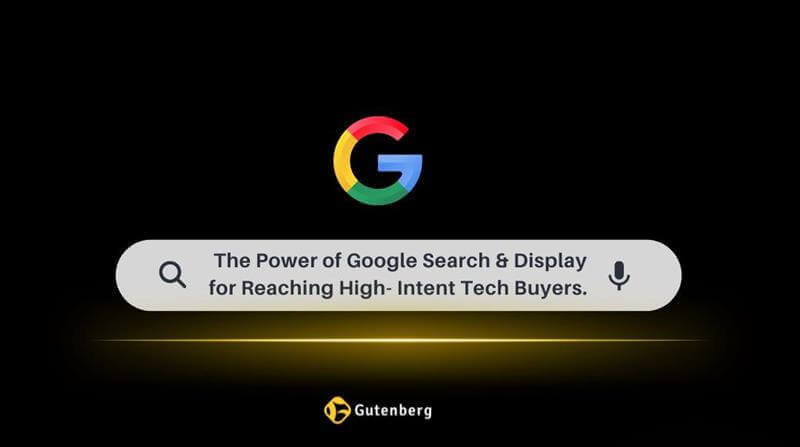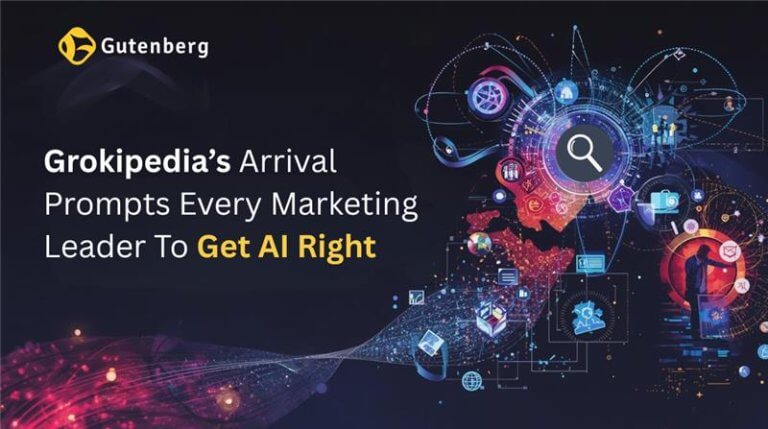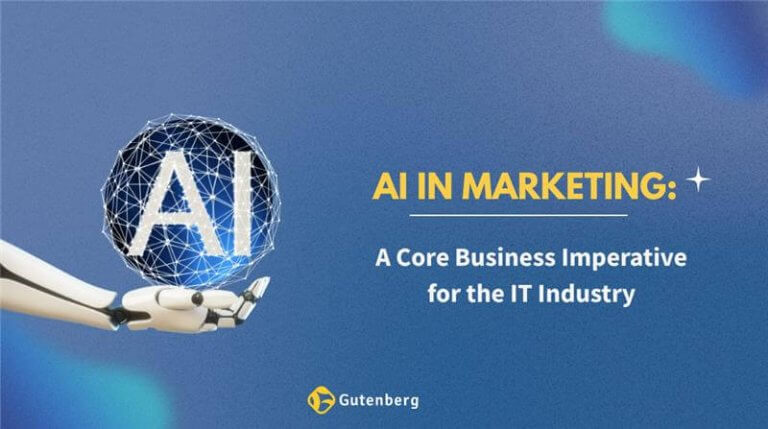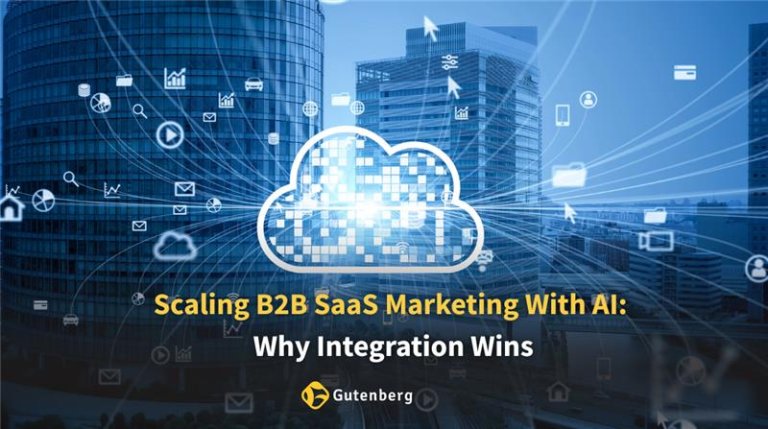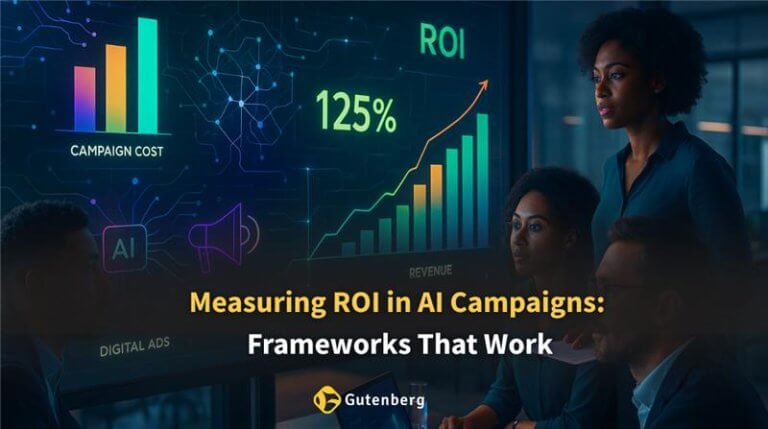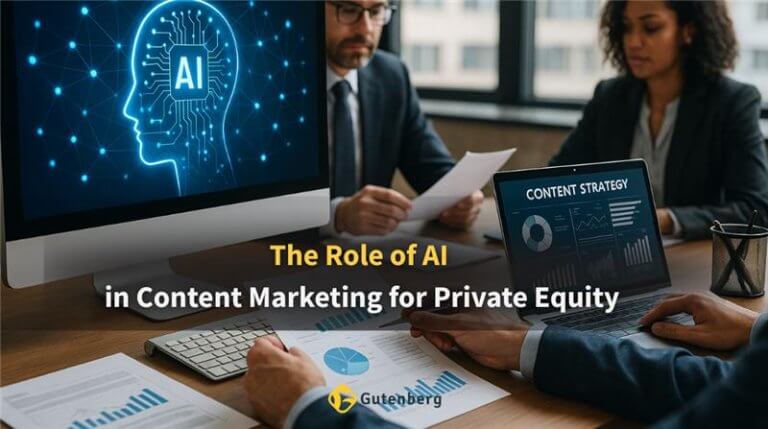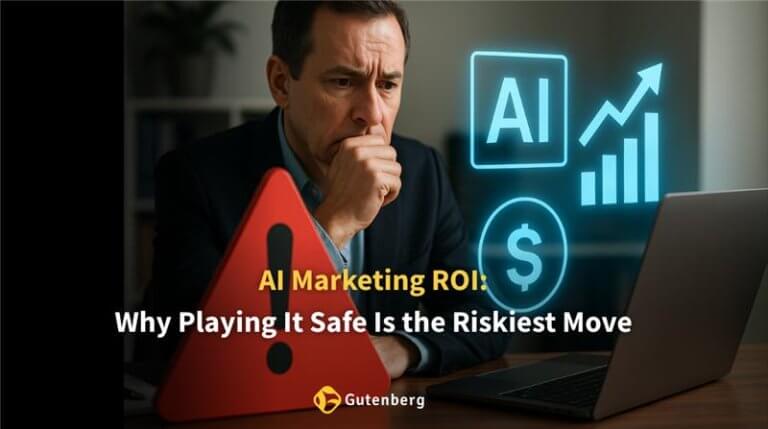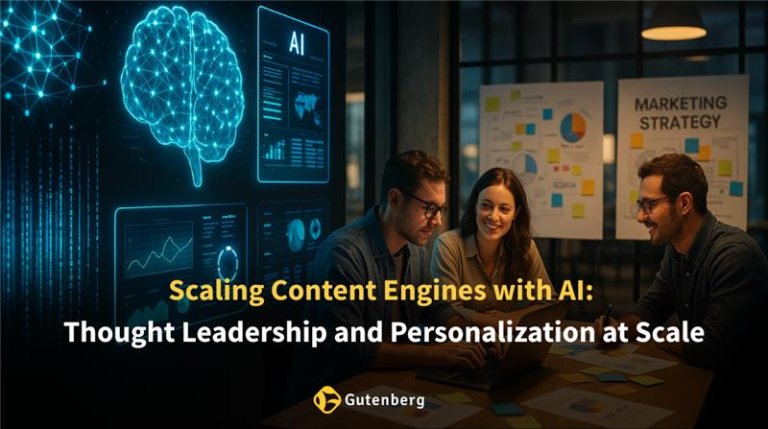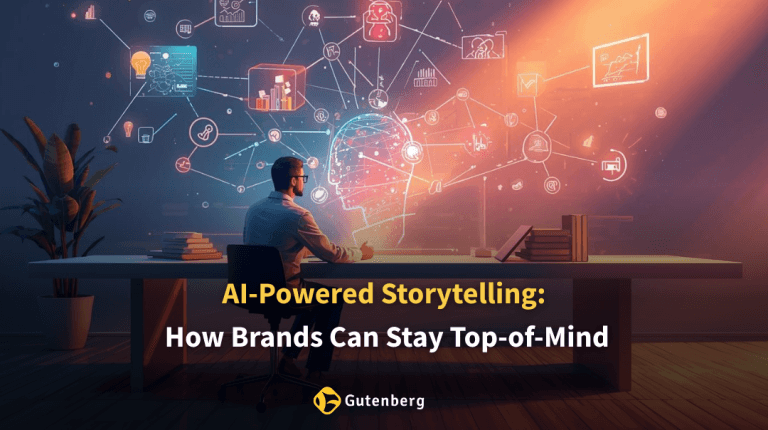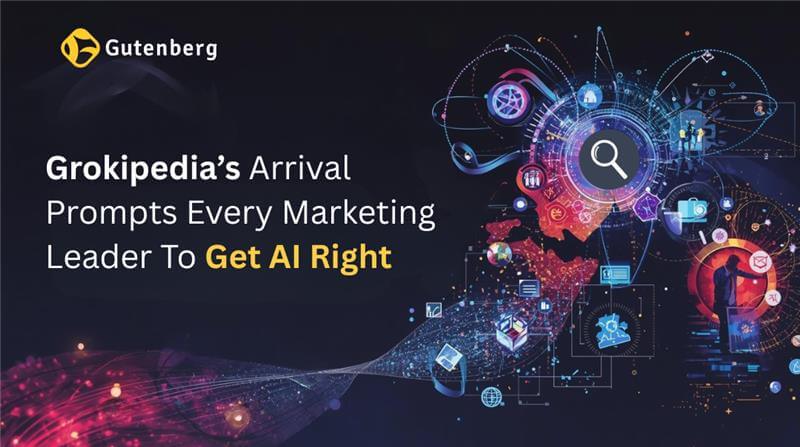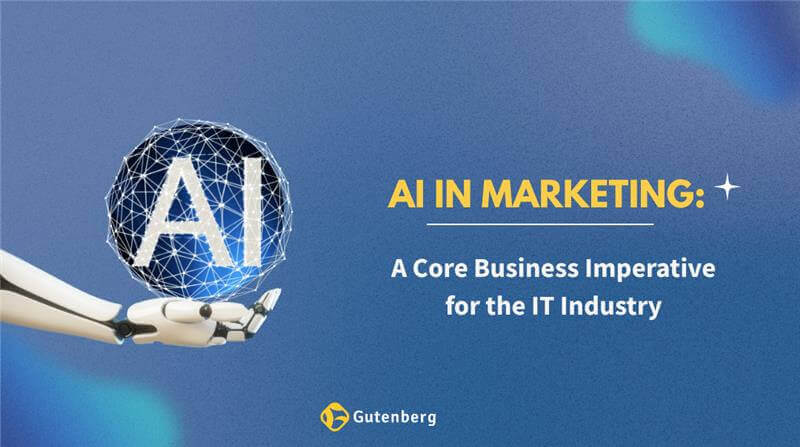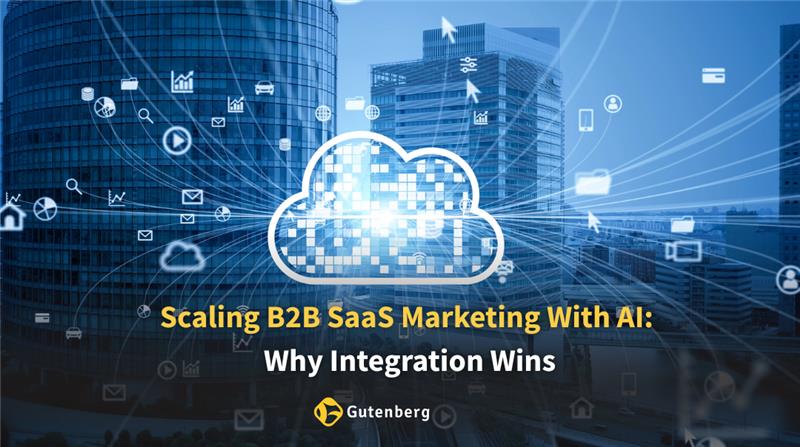Reaching the right tech buyers has become more precise than ever, thanks to the evolution of digital advertising. Among the many tools available, Google Ads for Tech Buyers stands out as one of the most effective ways to connect with professionals who are actively researching solutions, comparing products, and making purchase decisions.
In this blog, we’ll explore how Google Search and Display ads work together to help brands reach high-intent tech audiences. We’ll break down what defines buyer intent, how high-intent audience targeting works, and why both Search and Display matter. We’ll also dive into best practices for campaign setup and how marketing teams in the tech space can improve their B2B digital marketing outcomes through this approach. Lastly, we’ll cover how Gutenberg can support brands looking to make their Google Ads strategy more effective.
What Are High-Intent Tech Buyers (and Why They Matter)?
What Defines High Intent on B2B Tech?
In B2B tech, high-intent buyers are those who take specific actions that signal they are close to a purchasing decision. These actions often include searching for software comparisons, pricing information, integration options, or product reviews.
Unlike general browsing or awareness-driven behavior, these signals show a level of seriousness that justifies ad spend. According to a report, 71% of B2B buyers begin their research with a generic search but quickly shift to branded terms as they narrow their choices.
Why Intent Matters in the Tech Buying Cycle
Tech purchases often involve long decision-making processes, especially in enterprise contexts. When marketers rely only on broad targeting, they risk wasting budget on users who aren’t ready to engage. Google Ads for Tech Buyers allows brands to filter through this noise and prioritize visibility among those most likely to act.
Focusing on high-intent audience targeting improves cost efficiency and increases the chances of qualified leads entering the pipeline. This precision is especially critical for tech industry lead generation, where the sales cycle can span weeks or even months.
Why Google Search Ads Work for B2B Digital Marketing
Search as a Direct Line to Intent
Search queries are often the most transparent expression of what a buyer wants. Someone searching for “best CRM for startups” or “enterprise data backup tools” is already in the decision zone.
Search ads offer marketers a chance to place their message at the very moment intent is expressed, and for B2B digital marketing professionals, that kind of timing is invaluable.
Google processes over 16.4 billion searches per day, and within the tech vertical, a significant portion of these are tied to vendor research or product exploration.
Google AI’s Role in Reaching the Right Buyer
With recent updates, Google now uses AI to refine how ads are delivered based on context, search history, and conversion likelihood. For those using Google Ads for Tech Buyers, this means better alignment with intent-heavy keywords and improved visibility when it matters. Marketers can focus on the outcomes instead of constant bid and keyword adjustments, allowing campaigns to evolve based on real-time buyer behavior.
Display Ads: Building Awareness While Supporting Intent
Complementing Search with Display Advertising
Many buyers don’t convert the first time they encounter a solution. That’s where search and display advertising together become effective. After a prospect clicks a search ad but doesn’t act, display ads can reintroduce the brand during subsequent browsing.
Google Display Network reaches over 90% of internet users across millions of websites, making it a powerful tool to reinforce messaging and build familiarity.
For tech buyers navigating multiple options, repeated exposure increases trust and recall. This is particularly valuable in tech industry lead generation, where multiple decision-makers may be involved.
Contextual Targeting and Custom Intent Audiences
Google Display Ads allow advertisers to target based on interests, site content, and intent signals. With custom intent audiences, marketers can create segments based on keywords buyers have recently searched for.
For instance, if someone is searching for “cloud migration for enterprise,” display ads can reach them on relevant publications even when they’re not actively searching. This targeting model fits naturally into B2B digital marketing strategies that aim to stay relevant without being intrusive.
Proven Google Ads Strategies for Tech Industry Lead Generation
Segmenting Campaigns by Buyer Journey Stage
- TOFU (Top-of-funnel): Display ads to drive awareness of your category or solution
- MOFU (Middle-of-funnel): Search ads targeting informational queries like “compare cloud hosting providers”
- BOFU (Bottom-of-funnel): Search ads with purchase-focused keywords like “get a quote” or “best tool for…”
This type of funnel mapping ensures that high-intent audience targeting is matched with the right message at the right time.
Matching Ad Formats to Intent Signals
Not every buyer responds to the same content. Responsive Search Ads dynamically test combinations of headlines and descriptions to find what works best. On the display side, image-based or HTML5 banners can be used for high-impact retargeting.
This layered approach works especially well in search and display advertising campaigns where touchpoints vary widely.
Bidding Strategies That Prioritize Value Over Volume
B2B tech marketers don’t need more clicks. They need better ones. That’s why focusing on conversion-based bidding or target CPA strategies makes more sense.
A study shows that average conversion rate for B2B Google Ads is around 3.04%, but properly optimized campaigns focused on intent can surpass that benchmark by a significant margin.
How Gutenberg Helps B2B Tech Brands Win with Google Ads
Creating effective Google Ads campaigns requires more than keyword research. It calls for strategy, coordination, and execution that aligns with real business goals.
At Gutenberg, we help B2B tech companies turn Google Ads for Tech Buyers into meaningful lead generation engines. Our team works closely with clients to design tailored campaigns that prioritize high-intent audience targeting, balance search and display advertising, and support every stage of the buyer journey.
We don’t chase clicks. We focus on outcomes that matter: qualified leads, marketing-influenced pipeline, and scalable growth.
Whether it’s refining your B2B digital marketing strategy, identifying new tech industry lead generation opportunities, or making better use of campaign data, we’re here to help. Companies that work with us gain a clearer direction, a smarter setup, and a more dependable channel for lead acquisition.
Conclusion: A Smarter Way to Reach Tech Buyers
In a market where attention is fragmented and buying cycles are long, focusing on intent is one of the few strategies that consistently delivers results. Google Ads for Tech Buyers, especially when combining both search and display advertising, offers a reliable way to connect with the right people at the right time.
High-intent buyers are already looking. The question is whether your brand will show up when they search and stay visible as they make decisions. By prioritizing high-intent audience targeting, aligning campaigns to funnel stages, and using AI-backed tools, marketers can generate leads that truly move the business forward.
For tech companies serious about improving their B2B digital marketing, now is the time to revisit your ad strategy. And if you’re looking for a partner who understands how to turn clicks into clients, Gutenberg is ready to help.

